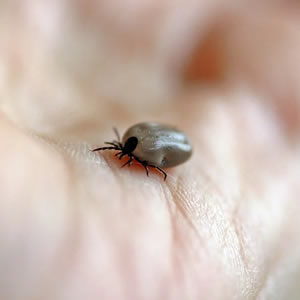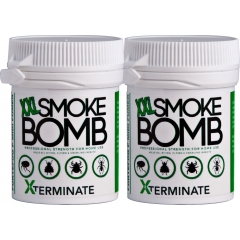
May 31st, 2022 by
Fleas and ticks have a number of things in common: they both live on animals, they both feed on blood, they can both irritate the skin from their bites, and they can both spread diseases. We tend to think of them as one and the same, often because single veterinary treatments, such as ‘spot on’ medication, usually cover them both.
and the same, often because single veterinary treatments, such as ‘spot on’ medication, usually cover them both.
However, beyond these common features, they are actually quite different. Fleas are wingless insects with 6 legs that can jump, while ticks have 6-8 legs and are arachnids, so part of the spider family. Fleas usually live on one host whereas ticks will jump from host to host. And fleas thrive in warmer weather, where ticks are better adapted to survive cold weather.
In terms of your home, it’s fleas that you need to be worried about as they are more likely to infest it due to the way they multiply and can live in soft furnishings and carpets.
How do they get into your home?
Fleas are most likely to enter your home on your pet, where they will live on their skin and feed on blood. While adult fleas can nestle very securely in fur, their eggs and larvae can fall off and that’s when they take up residence in carpets, beds, and sofas. Though they would much rather feed on cats and dogs, they need to feed on blood to survive so will bite humans if that’s all they can get. They can, however, also enter on feet or second-hand textiles/furnishings.
How do you know you have them?
The tell-tale signs are your pets scratching excessively, finding bites on your own skin, and – if you look closely – you can actually see them. You may notice black or white specks on your animal’s skin, and you could see them jumping around there. Not only is it thoroughly unpleasant to think of an infestation in your home, but bites can become infected and, as mentioned earlier, they do spread nasty things such as typhus and tapeworms.
Dealing with fleas: prevention and treatment
There are two aspects to dealing with fleas (and the same measures will also cover ticks as well), and that is prevention and treatment. Prevention is always your best defence, and you can do this pretty effectively with regular, proactive treatments such as spot-on liquids and/or flea collars (for cats). Vacuuming and washing carpets regularly will also help.
However, no pest control treatment is infallible, so you could still find yourself, a victim, of an infestation and once they are there, they will multiply rapidly, especially over the warmer months of summer. For fleas, like many very tiny pests that have large populations, such as bed bugs or silverfish, the best course of action is to combine several treatments to make sure you capture them all. You only need to miss the odd egg or larva for them to continue reproducing and you could be back to square one within weeks.
These are useful treatments to apply:
Protector C Spray
Protector C spray not only kills a range of insects but also contains a growth regulator that will prevent them from reproducing to prevent further infestation. The water-based formula is safe for use on most surfaces, it will also create a barrier that will remain for up to 6 weeks perfect for catching any remaining fleas or ticks that have avoided other treatments. See more.
1L Protector C Super Insect Killer and Growth Regulator Spray Price: £13.96
Insect Killer Powder
A dusting powder is perfect for getting into tiny crevices and for use around areas you don’t want to get wet, such as electrical sockets, near wires and in corners of rooms, it is perfect to be sprinkled around the skirting edges. See more.
Fumers
Fumers are one of the most popular methods of treatment, with its knockdown instant kill nature, it's perfect for clearing out the large bulk of an infestation. The smoke is perfect for getting into every nook and cranny and they are great value for money with one 16g fumer covering an area of 34 cubic meters, they are a great solution if you require a full treatment across your home. See more.
2 x Xterminate 16g XXL Midi Fumers Price: £17.94
Flea Killing Kits
Because it’s so effective to use a combination of treatments, you can buy a bundle that includes several of them, including Smite Organic Diatomaceous earth powder, which can be applied directly (and safely of course) to pets themselves. See more.
Keep treating
As well as using several treatments, it’s prudent to repeat them a few times to do a really thorough job, we recommend retreating rooms around 7-10 days after initial treatment this way and eggs that have since hatched and avoided the initial treatment. Of course, as well as treating your home it is very important to keep with regular treatments for your pets too.
Comments
Leave a reply
Your e-mail address will not be published. All fields are required


